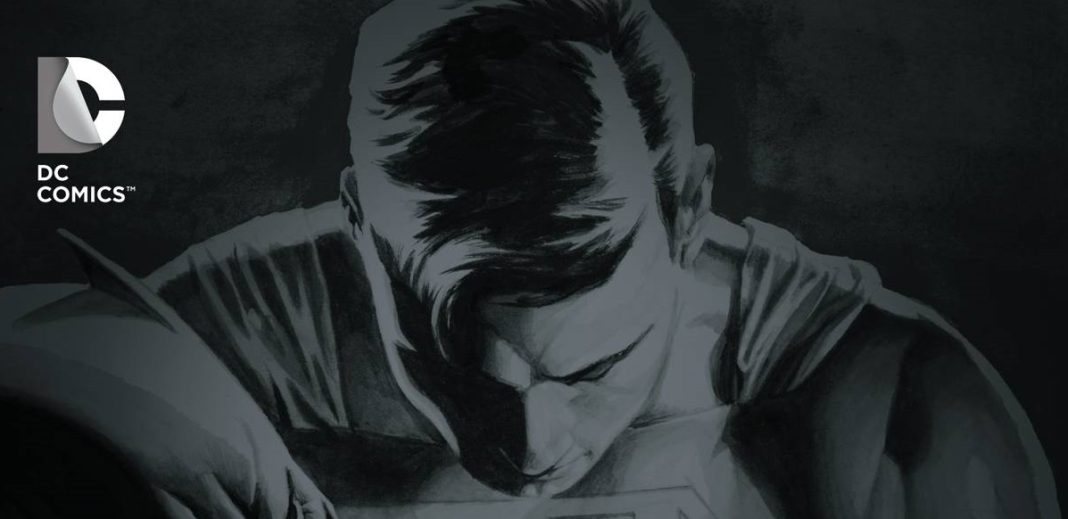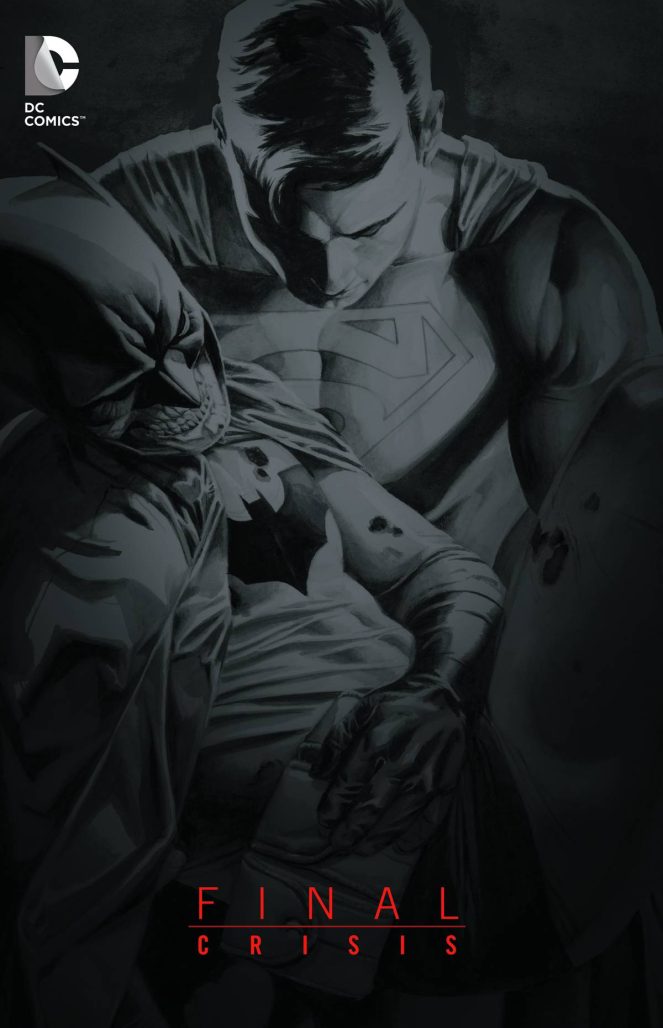“You ask me, fire was our first mistake.”
Final Crisis is a bit of a mess.
It’s also one of the greatest events that DC has ever published. The mess is two-fold.
One; it follows along a similar structure that its preceding event did, Infinite Crisis, in that it’s not really one sole story. It’s multiple stories that span across the DC Universe. From Countdown to Infinite Crisis through 52 to Countdown to Final Crisis: Aftermath, there were many spinning plates encompassing numerous regions of the DC’s multiverse. It got even more complicated in Countdown as pieces kind of started being misaligned, mini-series covering important bits were essentially thrown out for being contradictory, and some of the architects of the overall fate of the DC Universe felt like their directions were competing.
Two; even with just the core Morrison-penned narrative, due to multiple streams, you’ve got a number of threads feeding into it from Seven Soldiers of Victory through Batman RIP, and a whole army of collaborators that can make it feel like a patchwork at times. This led to some delays, and thereby fill-ins and a few things shipping out of order, but that point is largely moot with the collections.
But, through all of that, at its core, it was still a pretty spectacular mess, with a main narrative collected in Final Crisis: The Essential Edition from Grant Morrison, JG Jones, Doug Mahnke, Carlos Pacheco, Alex Sinclair, Rob Leigh, and an army of other pencillers, inkers, colourists, and letterers across the many moving parts.
At its heart, Finial Crisis is a celebration and reinterpretation of many of the building blocks of the DC Universe. On its surface, it is of course another crisis in the long line of DC crisis events, playing with the throughline of multiverses, Monitors, red skies, and such. But it’s wrapped around at first a mystery of who killed Orion and a framework of turning Earth into the Fifth World, as Darkseid wins, and other elements of Kirby’s contribution to DC are explored, like Kamandi, OMAC, and the Evil Factory. Woven through that framework are pieces that DC absorbed from other publishers, like Charlton and Quality, and an army of the multiversal Supermen. It’s interesting in how it presents fallen and broken iterations of the DC Universe in order to redeem them, showing how hope and perseverance can overcome even the darkest dreams of Darkseid.
Final Crisis began with JG Jones handling the art. He’s got a wonderful, open, but detailed, style that always reminds me of the Legion of Super-Heroes style that gave us Stuart Immonen, Adam Hughes, and Chris Sprouse. It’s truly beautiful work, but it takes Jones a lot of time to deliver it. Which led to delays and Carlos Pacheco & Jesus Merino and Doug Mahnke & Christian Alamy (as well as many other inkers) coming in to pick up the slack (as well as Mahnke handling the art for the tie-in mini-series Superman Beyond). Pacheco & Merino are in roughly the same wheelhouse as Jones. There are definitely differences, but it’s still relatively seamless. Mahnke, on the other hand, has a radically different style. He reins in some of the extreme exaggeration of his work here, but he still gives us some hard angles, uniquely detailed musculature, and a density to his linework. All of it is impressive, really. Especially when you take in the scope and the amount of characters that often appear on any given page.
This story is immense and the art team overall still manage to knock it out of the park. This includes the inkers, colourists, and letterers. Alex Sinclair and Rob Leigh set out an initial feel for the colours and letters in the main Final Crisis book and it largely carries through the core. I feel remiss not mentioning them all by name, but I do think it’s a testament to all of their abilities that there’s no real piece throughout the book that feels out of place. While everything doesn’t look the same, with what look like different colouring choices both between line artist changes, and as the story gets tonally darker, or slight lettering changes and unique character word balloons, it’s impressive as to how cohesive they make it. It may be a literal army contributing to the story, but they maintain a consistent vision.
Overall, the Final Crisis event was massive and really could be considered a final testament for the DC Universe that began in Crisis on Infinite Earths in 1985 and was very much the culmination in DC’s universe-wide storytelling that they started in Countdown to Infinite Crisis. There are so many other things that inform and enrich the story being told here, like a beating heart to the post-Crisis DC Universe. Still, the core of Final Crisis from Morrison, Jones, Mahnke, Pacheco, Sinclair, Leigh, and every collaborator is an impressive feat, one hell of a story, and a celebration of the imagination that went in to building the DC Universe.
Classic Comic Compendium: FINAL CRISIS
Final Crisis
Writer: Grant Morrison
Artists: JG Jones with
Pencillers: Doug Mahnke, Matthew Clark, Carlos Pacheco, Lee Garbett, Marco Rudy
Inkers: Christian Alamy, Rodney Ramos, Tom Nguyen, Walden Wong, Drew Geraci, Derek Fridolfs, Norm Rapmund, Rob Hunter, Don Ho, Jesus Merino, Trevor Scott, Mark Irwin
Colourists: Alex Sinclair, David Baron, Richard & Tanya Horie, Guy Major, Pete Pantazis, Tony Avina
Letterers: Rob Leigh, Nick Napolitano, Steve Wands, Ken Lopez, Travis Lanham, Jared K. Fletcher, Rob Clark Jr.
Publisher: DC Comics
Release Date: April 9 2019 (essential edition)
Also available collected in Final Crisis Omnibus
Read past entries in the Classic Comic Compendium!








